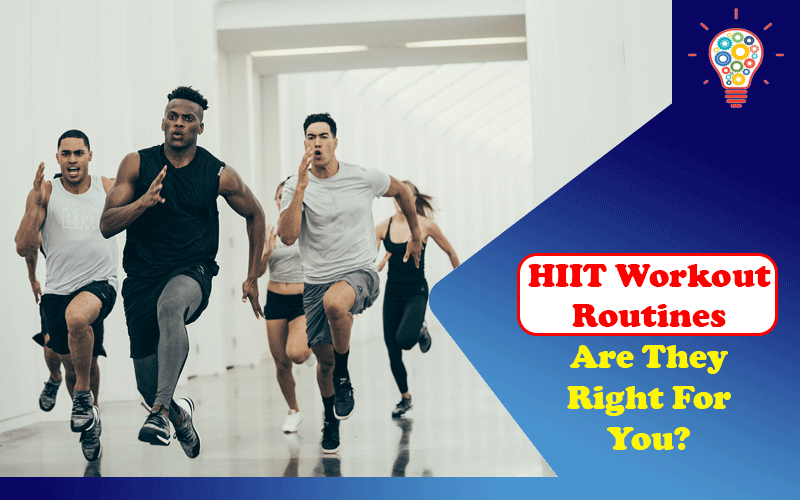When it comes to fitness, you might have had to get creative in the last two years. Countless fitness centers moved their classes online to great success, and many fitness gurus on YouTube saw a staggering amount of growth.
Enter HIIT workouts. They are easy, at-home workouts with a focus on the most amount of energy burned in the least amount of time. Weights optional. HIIT has always been a trendy workout option, but its popularity has seriously spiked these last few years – even pre-pandemic!
However, while effective at burning energy, many wonders if HIIT workouts are really all that – or if it’s just more huffing and puffing for very little gain.
This article will examine what HIIT is, how it works, and what sort of benefits you can expect!
Table of Contents
What Is HIIT?
Otherwise known as High-Intensity Interval Training, HIIT workouts focus on bursts of intense exercise followed immediately by a small window of recovery, usually 30 seconds to a minute.
An entire HIIT workout will usually not last longer than 20 minutes, and usually burns between 100 to 200 calories, depending on your fitness levels and weight. To put it into perspective, you’d burn roughly the same amount of calories on a 45-minute walk.
A HIIT workout will usually consist of one minute of aerobic exercises such as jumping jacks, lunges, or running in place to increase heart rate followed by 30 seconds to a minute of rest or reduced motion. This process usually repeats 5 to 15 times.
HIIT workouts are available at most gyms and health centers, like The Studio at Killian Chiropractic, or on fitness websites or YouTube.
If you’re looking to get started at home, all you need are a good pair of sneakers, a yoga mat, and perhaps some hand and ankle weights for added resistance.
Benefits
- Increases Calorie Burn
Studies have shown that HIIT workouts can burn up to 25 to 30 percent more than a standard workout. The key here is a targeted spike in heart rate for a very short amount of time, rather than focusing on endurance – like running.
- Increases Metabolic Rate
HIIT will increase your metabolic rate even when you’re not actively working out. This is due in part to HIIT’s targeted intensity, which results in higher calories burned even after you’ve continued with your day. Although, this ‘afterburn’ usually only lasts a few hours at most.
HIIT workouts also have been found to burn energy using our fat stores rather than carbohydrates.
- Increased Fat Loss
While it is not possible to spot-treat fat on your body, HIIT has been shown to reduce visceral fat, which is often found around the waist and stomach.
Of course, weight loss endeavours should always be accompanied by a healthy eating plan. Not only will you lose weight faster, but you’ll also feel better and have more energy for your HIIT workouts.
- Reduced Blood Sugar
Several studies have shown that sustained and regular (to the tune of around 12 weeks) HIIT workouts may reduce blood sugar levels and improve insulin resistance.
Who Shouldn’t Do HIIT Workouts?
While the benefits of HIIT workouts are many, so are the cons.
If you are particularly overweight, it might be better to start with sustainable, bite-sized lifestyle changes such as walking, swimming, yoga, and other low-impact activities that are both enjoyable and get your body moving. As you gain strength and endurance, then move to a beginner HIIT workout routine.
If you suffer from chronic pain or are recovering from an injury, try going for a low-impact exercise like the ones listed above – or search for ‘step workouts’ online. These are great alternatives to at-home HIIT workouts that help you reach your step goal without having to leave the house! You may find that beginner HIIT workouts with modified steps are suitable.
If you are pregnant or have recently given birth, it’s best to avoid HIIT workouts altogether until you consult your physician.
The Take Home
Working out at home has never been easier, and the intensity of a HIIT workout gives you the best bang for your buck! Be sure to work out in a well-ventilated area with water close by for rest intervals.
It’s normal to feel tired, sweaty and overexerted during a HIIT workout, but stop immediately if you feel faint, develop pain, or become dizzy.
Read Also: 7 Factors to Consider When Creating a Workout Plan


2 thoughts on “HIIT Workout Routines: Are They Right For You?”